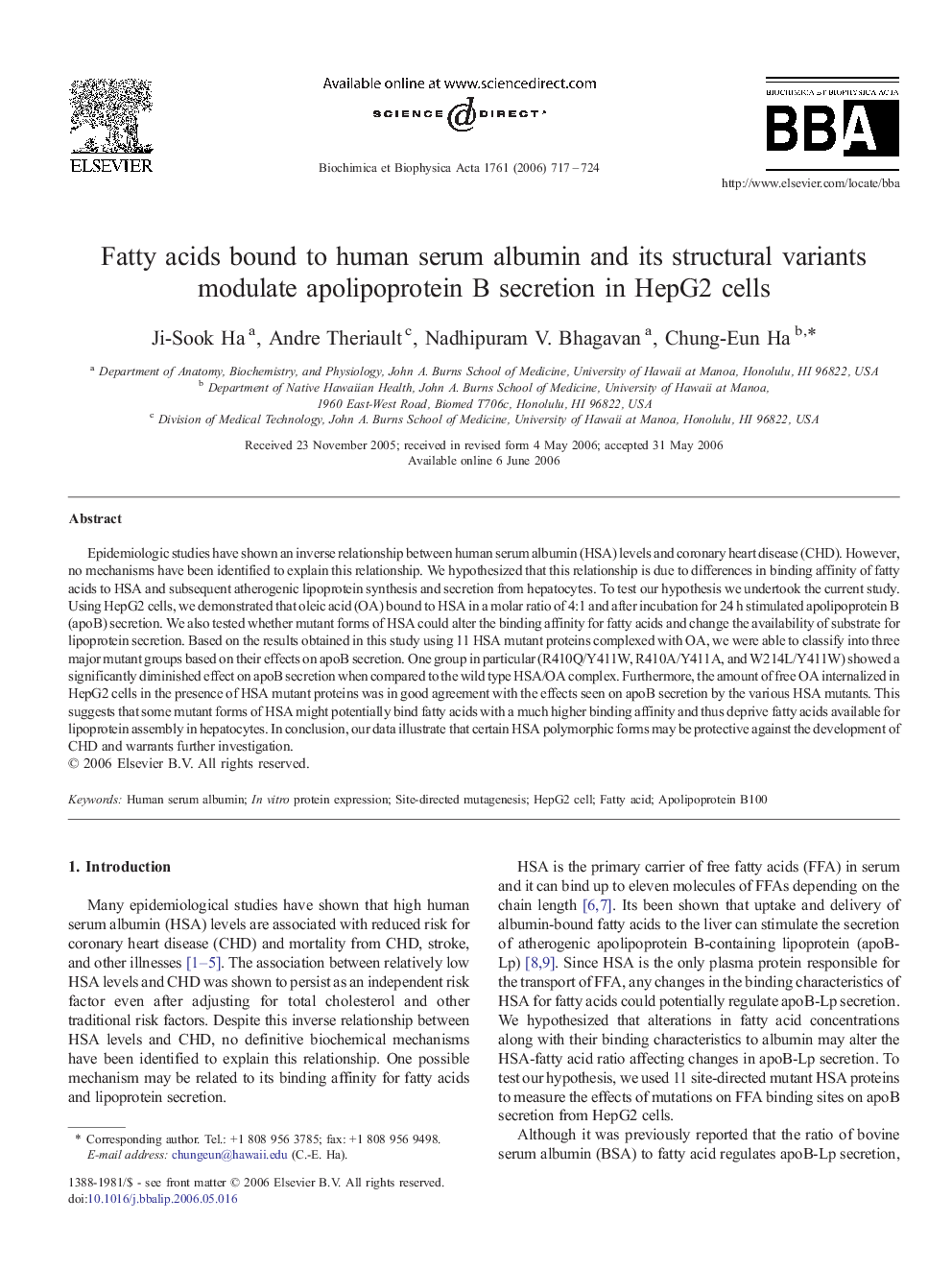| Article ID | Journal | Published Year | Pages | File Type |
|---|---|---|---|---|
| 1950293 | Biochimica et Biophysica Acta (BBA) - Molecular and Cell Biology of Lipids | 2006 | 8 Pages |
Epidemiologic studies have shown an inverse relationship between human serum albumin (HSA) levels and coronary heart disease (CHD). However, no mechanisms have been identified to explain this relationship. We hypothesized that this relationship is due to differences in binding affinity of fatty acids to HSA and subsequent atherogenic lipoprotein synthesis and secretion from hepatocytes. To test our hypothesis we undertook the current study. Using HepG2 cells, we demonstrated that oleic acid (OA) bound to HSA in a molar ratio of 4:1 and after incubation for 24 h stimulated apolipoprotein B (apoB) secretion. We also tested whether mutant forms of HSA could alter the binding affinity for fatty acids and change the availability of substrate for lipoprotein secretion. Based on the results obtained in this study using 11 HSA mutant proteins complexed with OA, we were able to classify into three major mutant groups based on their effects on apoB secretion. One group in particular (R410Q/Y411W, R410A/Y411A, and W214L/Y411W) showed a significantly diminished effect on apoB secretion when compared to the wild type HSA/OA complex. Furthermore, the amount of free OA internalized in HepG2 cells in the presence of HSA mutant proteins was in good agreement with the effects seen on apoB secretion by the various HSA mutants. This suggests that some mutant forms of HSA might potentially bind fatty acids with a much higher binding affinity and thus deprive fatty acids available for lipoprotein assembly in hepatocytes. In conclusion, our data illustrate that certain HSA polymorphic forms may be protective against the development of CHD and warrants further investigation.
